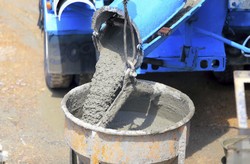One step closer to the commercialisation of self-healing materials
Certain types of synthetic materials, widely referred to as self-healing, are designed to chemically repair cracks and other defects in their structures. The EU-funded SHEMAT project investigated these materials for commercialisation purposes. Project partners implemented self-healing in various materials in order to commercialise the developments. They also created standardised methods for characterisation of self-healing potential. The focus was on four types of materials: polymers, fibre-reinforced polymer composites, concrete and ceramics. In all, 11 PhD and 4 postdoctoral students via training and secondments actively contributed to the scientific progress and advancement of available approaches for self-healing effects in a broad class of materials. Three training schools were organised on the development, assessment, commercialisation and sustainability of self-healing materials. Scientists presented practical solutions for different self-healing coatings based on microcapsules or superabsorbent polymers. Commercial ionomers exhibited potential as additives in tire mousse. For bulk polymers, the supramolecular, hydrogen bond-based approach was successfully transferred to epoxy systems and their composites. They demonstrated that additives of self-healing features with design details typically found in reinforced structures show great promise. The development of self-healing concrete for the market using either porous carrier-protected or self-protected bacteria/spores also showed progress. Biological nitrate reduction was shown to be an eco-friendly, effective route for nutrition. The SHEMAT team investigated two different classes of ceramic materials. MAX-phase ceramics were developed and tested under both laboratory and industrial conditions. It obtained crack-healing oxide ceramics by doping with carbide-based healing particles, resulting in full strength recovery. Additional findings show that the self-healing evaluation of mechanical restoration in different material classes requires flexible yet harmonised parameter sets. New test methods to quantitatively determine the mechanical properties after healing of controlled damage were developed and implemented for the different material classes. By implementing self-healing functionalities in different materials, SHEMAT outcomes should accelerate the transfer of such technology to commercial products. Project efforts will also contribute to the wider acceptance and commercial exploitation of self-healing materials.
Keywords
Self-healing materials, SHEMAT, polymers, composites, ceramics

